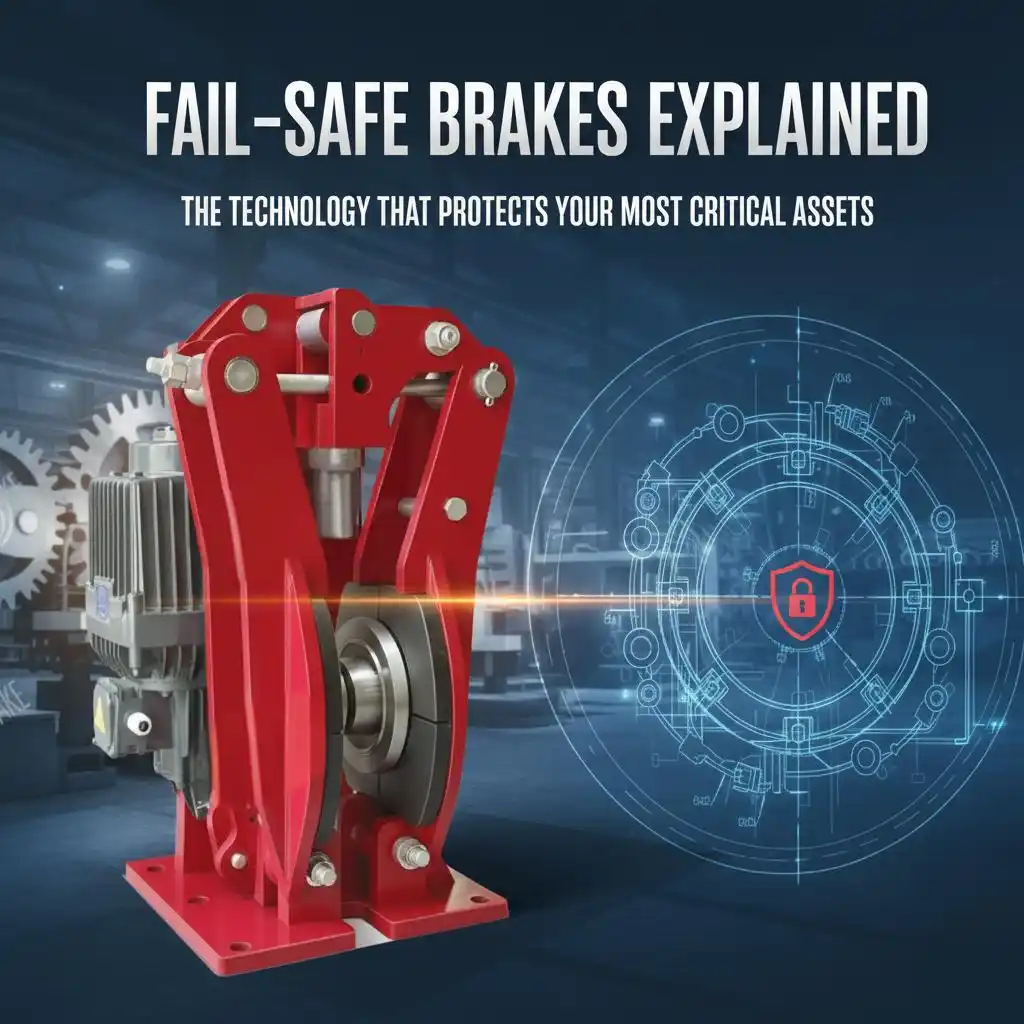في الصناعات الثقيلة، يُعد نظام المكابح الآمنة مجموعة هندسية من المكونات المصممة لمنع الفشل الكارثي عن طريق إيقاف الآلات بشكل متحكم فيه أو تثبيتها بأمان في وضع ثابت، خاصة عند فقدان الطاقة أو حدوث حالة طارئة. وعلى عكس مكابح الخدمة الأساسية المستخدمة للإيقاف أثناء التشغيل العادي، تعمل مكابح الأمان كخط دفاع إضافي ونهائي.
المبدأ الهندسي الأساسي الذي يحدد نظام المكابح الآمنة الصناعية الحقيقي هو تصميمه الآمن الفاشل.
مبدأ السلامة الفاشلة: قلب السلامة الصناعية
يتم تشغيل المكابح الآمنة ميكانيكياً بواسطة مصدر غير مزود بالطاقة وموثوق، مثل مجموعة قوية من النوابض المضغوطة أو الجاذبية. يتطلب توفير الطاقة (عادةً هيدروليكية أو هوائية أو كهربائية) لتحرير أو فك المكابح، مما يسمح للآلة بالعمل.
هذه فلسفة تصميم أساسية:
- Default State is Engaged: The brake is always locked on unless power is intentionally applied to release it.
- Guaranteed Action on Power Failure: If control power or hydraulic pressure is lost for any reason (e.g., a cut cable, a burst hose, a power outage), the releasing force is removed, and the springs immediately and automatically engage the brake, securing the load.
هذا هو العكس المباشر لنظام الكبح النشط الذي يتطلب طاقة وإشارة تحكم لتطبيق المكابح. تأتي موثوقية مكابح الأمان الصناعية من نزعتها الفطرية للتشغيل في غياب الطاقة.
المكونات والتطبيقات
نظام المكابح الآمنة ليس جزءًا واحدًا بل حل متكامل يمكن أن يشمل:
- Spring-Applied Caliper Brakes: These are the workhorses of industrial safety. Mounted on a brake disc (rotor), their calipers contain a stack of powerful springs ready to clamp down the instant hydraulic or pneumatic release pressure is lost. They serve as emergency stop brakes on cranes, hoists, conveyors, and rolling mills.
- Rail Clamps: As a storm and parking brake for rail-mounted equipment like gantry cranes, these devices use immense spring force to clamp directly onto the rail, preventing the machine from being pushed by high winds.
- Motor Brakes: Often integrated into the housing of an electric motor, these fail-safe brakes engage to hold the motor shaft stationary when power is cut, which is critical for hoist and elevator applications to prevent loads from falling.
التمييز عن مكابح الخدمة
من الضروري التمييز بين الاثنين:
- فرامل الخدمة are designed for frequent, dynamic stopping during normal operations. They are built to manage and dissipate large amounts of heat and are typically power-applied.
- Safety Brakes are designed for static holding (parking) and for a limited number of emergency stops over their lifetime. Their primary role is not to manage energy, but to provide a positive, non-slip mechanical lock.
يُعد نظام المكابح الآمنة الحماية النهائية للأصول الصناعية عالية القيمة، والأهم من ذلك لحياة الإنسان. يضمن تصميمه الآمن أداء وظيفته الحيوية عند الحاجة القصوى—أثناء فقدان الطاقة أو التحكم في النظام بشكل مفاجئ، مما يوفر طبقة حماية نهائية مضمونة وموثوقة.

![[Translate to Arabic placeholder]](https://www.takebrakes.com/wp-content/uploads/2025/04/logo-300x51.png)